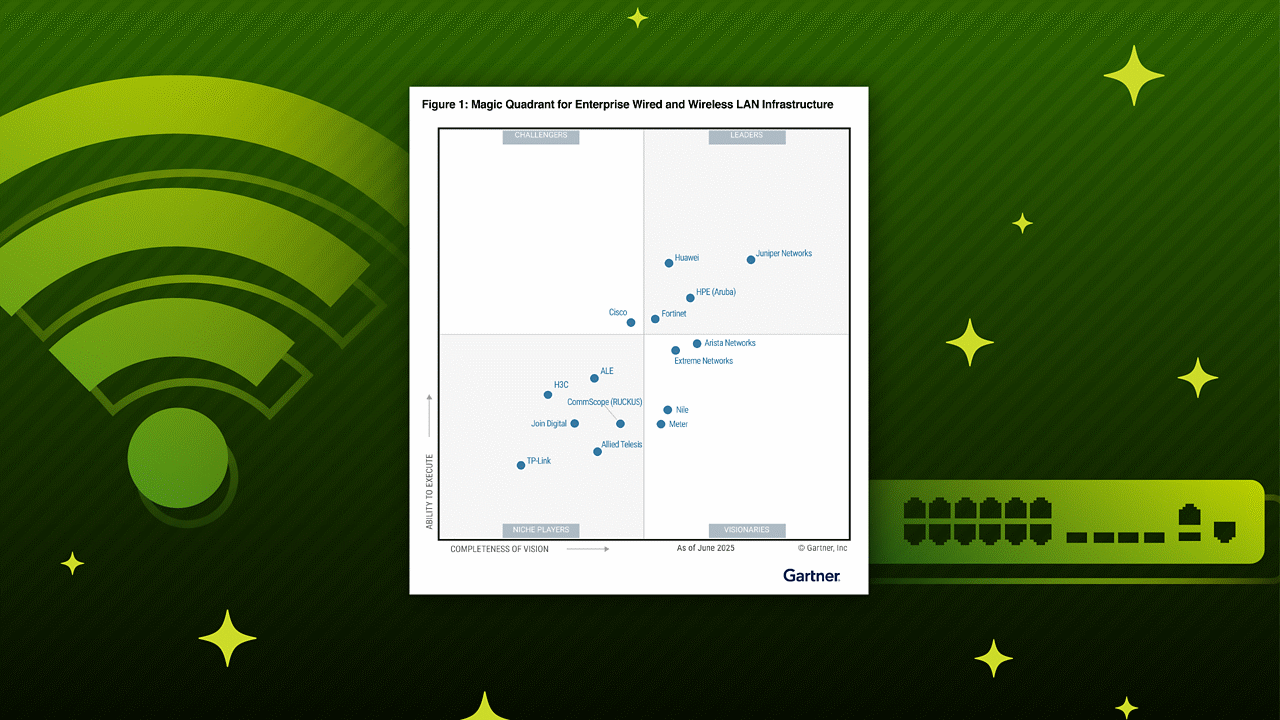Network operators today are under pressure to sustain increasing traffic across wide area networks (WANs), with the rise of increasingly latency-sensitive network applications alongside the steady increase in high bandwidth applications such as streaming video. New AI models, inhaling, processing, and interacting with data and users far and wide cause unexpected traffic patterns. Meanwhile, the ongoing rise in latency-sensitive connectivity demand shows no sign of slowing down.
For the end-user, success means an experience so flawless that the network itself is imperceptible. For the operator, it means continuous real-time network optimization: fine-tuning and adjusting the network in real-time to maintain that flawless experience, while running the network hotter: sustaining more traffic with the same capacity.
But what does “network optimization” really mean and how can it deliver real value to businesses? Let’s first talk about two examples of real-time optimization parameters: bandwidth and latency.
Bandwidth usage growth drives significant investment in network expansion. Most operators plan the capacity dimensioning of their networks based on expected peak usage over a multi-year time horizon: getting it wrong means congestion, instability, and frustration for end-users who don’t get the streaming service they paid for, can’t join the conference call, can’t get their work done. Operations teams face rigorous retrospective analysis to understand exactly why it happened and how they should modify their network design to avoid future occurrences. Working in this reactive way is time-consuming, frustrating, and generally does not prevent future re-occurrences.
Latency is critical to real-time applications, which are delay-sensitive and become unusable if latency is high or inconsistent. Optimizing paths across the network for these applications to ensure that they always follow a path that meets a maximum latency constraint can ensure the network provides the required service levels for these applications, while leveraging available capacity on other available paths in the network for non-delay-sensitive applications.
Network operators may also need to optimize their networks while maintaining constraints such that certain customer traffic will never traverse certain geographies which may constitute a security risk.
These examples are just a few of the most common drivers why operators need to optimize their networks proactively, not reactively.
Juniper is an industry pioneer in Traffic Engineering (TE) technologies, which provide granular control of how traffic traverses the WAN to meet strict performance expectations while optimizing CapEx and OpEx. And while TE is possible through individual router configuration, this quickly becomes unmanageable in large scale networks. A centralized controller-based approach addresses this scale problem and provides the additional advantage of a 360° view of the network, with visibility of the entire topology and real-time network conditions: which links are running hot, which links have available capacity, and bandwidth utilization for TE policies and every path in the network. With this complete view, the controller can ensure optimal use of all available network resources in the face of seasonal and unexpected changes to traffic patterns. This both ensures optimal customer experience and postpones network upgrades that can delay millions of dollars in CapEx and OpEx. Juniper has been developing and deploying controllers like this in some of the world’s largest networks for over seven years.
Now we’re going another step further with an intent-based approach to network optimization. This builds on the success of our controller-based TE solutions by delivering the additional benefit of simplification: making it easier to design, deploy and manage connectivity that takes advantage of advanced TE and ultimately allows more of our customers to reap the business benefits that it can offer them.
So how does this work?
Paragon Automation has re-usable profiles that network designers configure to define the TE technologies for connectivity that they offer in their network and the optimization behavior. Endpoint groups allow the operator to define the topology of the connectivity, and the endpoint nodes involved, which are also re-usable and, used in conjunction with different profiles, can be used effectively to create different transport slices.

A view of the path intents in a network and bandwidth utilization
In seconds, you can deploy differentiated connectivity services with SLAs that meet your customers’ precise needs. Once deployed, Paragon Automation continuously optimizes the network to adapt to changing conditions, ensuring that the network delivers the business SLAs expected. This type of closed loop automation is foundational technology for network operators on their journey to the self-driving network™.
As the requirements change to meet the evolving needs of the business, the operator can easily modify their intent and reduce hundreds of configuration tasks into a single click. For example, let’s say a path intent is deployed to create a full mesh of low-latency connectivity between 100 routers. To add a 101st router to the mesh, simply add it to the endpoint group, publish the change, and the 200 new TE policies necessary will be automatically added to the network (one on each existing router towards the new router and 100 policies on the new router to all the existing routers). This radically simplifies the operational overhead of managing the lifecycle of network connectivity, so your operations teams can focus on other key business priorities.
A live topology visualization interface that leverages AI/ML to detect faults and routing problems within your network enables rapid troubleshooting for any issues that do occur, helping minimize user impact and saving yet more operation cycles.
Find out more about Intent-Based Network Optimization from Juniper Paragon Automation:

























